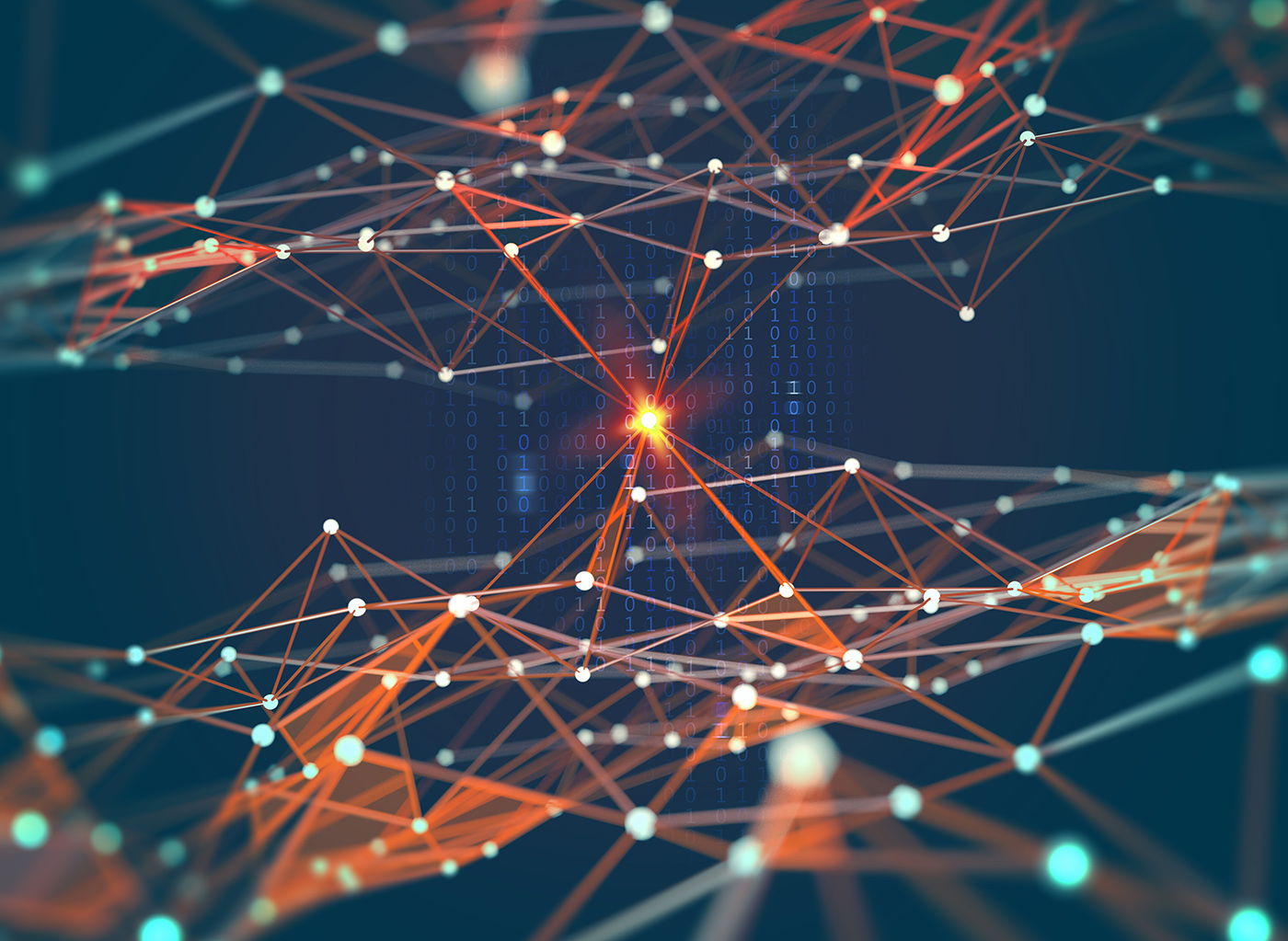Andrea Passarella, head of the Ubiquitous Internet research unit, guides us on a journey into edge computing

Let’s imagine that you are sitting comfortably in your self-driving car. After a long journey, the car has just arrived at its destination and starts parking maneuvers. But along comes another intelligent car and it would like to park next to yours.
So the two cars exchange a bit of information, agree on the best maneuvers to make, and both manage to park in a matter of seconds, with no chance of even brushing against each other.
At the edge of the network
The scene belongs to the future, but there are those, already in today’s world, who are studying the technologies that will make it possible. Andrea Passarella, Research Director at the IIT-CNR and head of the Ubiquitous Internet research unit, deals with networks, in particular with all those aspects regarding the latest frontiers of internet science. The word “frontiers” is more appropriate than ever to describe the studies on the edge, a term used by researchers to refer to all those devices that are located at the border of the infrastructure. “We all have a smartphone in our pocket that can automatically connect to a WiFi”, begins Passarella. “These devices typically send data to a central cloud. It may well be physically thousands of miles away, but it collects, analyzes, and resends the data, until it bounces off the phone of our friend sitting next to us. It happens for example when we take a photo and post it on Facebook or when we send a message via WhatsApp. But there is also another possibility. Two devices could also communicate directly with each other, without passing through servers scattered around the world. In the second case we are in the field of edge computing, data processing at the borders of the network, where the data is effectively produced”.
“We all have a smartphone in our pocket that can automatically connect to a WiFi”, begins Passarella. “These devices typically send data to a central cloud. It may well be physically thousands of miles away, but it collects, analyzes, and resends the data, until it bounces off the phone of our friend sitting next to us. It happens for example when we take a photo and post it on Facebook or when we send a message via WhatsApp. But there is also another possibility. Two devices could also communicate directly with each other, without passing through servers scattered around the world. In the second case we are in the field of edge computing, data processing at the borders of the network, where the data is effectively produced”.
So let’s go back to our self-driving cars. If the cars can communicate with each other and process the data on the spot, the connection is more stable and the calculation times of the maneuvers are reduced, so reducing the risk of accidents. Applying the same approach to two people who use the network to exchange messages, the most obvious advantage is in the level of privacy that can be obtained. With direct communication, the chances that our data will end up in the hands of a stranger are greatly reduced.
The mangrove society
The field of edge computing is booming and will do so even more in the years to come. This is for various reasons, from the ever-increasing use of personal devices (such as smart watches or wearable sensors) to the exponential increase in data shared on the network, taking into account the availability of the internet connection.
Industry experts speak of data gravity, comparing data to the force of the earth’s gravity, because it is able to push the Internet to evolve in a well-defined direction.
“The fact that we have these devices that generate data around us makes a link between the physical world and the cyber one, because everything we do in the physical world generates data on the Internet, and what we do there affects the very same physical world. Like when we publish on Instagram the photo of the dish we are about to eat at the restaurant, and a friend of ours who sees it goes to dinner in that place a few days later”, continues Passarella. Luciano Floridi, professor of Philosophy and Information Ethics at Oxford, talks about the mangrove society, referring to these plants, unique in the world, which live in the exact point where rivers join the sea. They have their roots in the water but emerge into the air, and it no longer even makes sense to wonder whether we are in the river, in the sea, or out of the water. The same goes for the “cyber-physical” world.
Passarella and his team, made up of about 30 people, study the new Internet starting from these visions. “For us, the network of the future is characterized by the pervasiveness of devices, by their extremely close contact with people, by their ability to “self-organize” for the users, and therefore by the convergence between the cyber and physical world”.
One technology, many applications
This approach can be applied in very different fields. “We have several projects underway. Some mainly concern basic research, others focus on specific application areas”, says Passarella. Within the context of Industry 4.0, for example, a decentralized network can in fact represent a solution for companies in which there are several machines that work on the same production and must exchange data, but want to do it safely without the risk of releasing industrial secrets outside the perimeter of the building.
But edge computing can also be useful to a tourist who is visiting a city and wants to know about the interesting attractions in that area, taking advantage of the data that other people generate. “There is still a lot to study on this technology. Let’s take the example of the tourist. They are going to be surrounded by a very high number of devices that are producing data, from the ambient temperature to the offer of a local store. Among all these data, only a few really interest the tourist, while the rest is noise and must be filtered”, notes Passerella. With his colleagues, he is using cognitive models, with algorithms that reproduce some cognitive functions of our brain for filtering information, to search precisely how to eliminate unnecessary information.
Passarella and co-researchers also study social networks, to understand how closely virtual life is linked to real life, as hypothesized in the mangrove society model. “Let’s start from models of organization of social communities already known to anthropology and see if they represent the way in which we structure our relationships also on social networks. In other words, you go to see if people have the same behavior on social media and in real life, for example, in terms of the number and types of relationships they establish”, he explains.